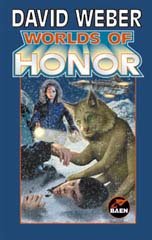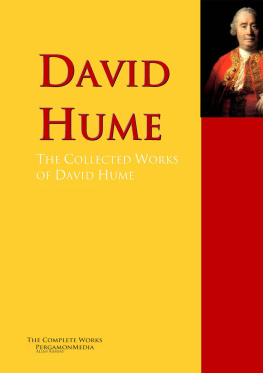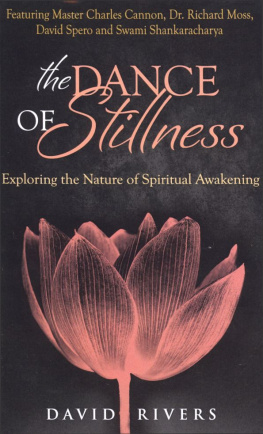Table of Contents
THE LUMINIST IS a warm dazzle of a first novel a profoundly human story of shadow and light fixed in the searing simplicity of David Rocklins diamondbright prose.
SUSAN TAYLOR CHEHAK, author of Apocalypse Tonight
NOT SINCE TINKERS have I read a book which, in its sheer beauty and mystery, has carried me off the way The Luminist has. Every sentence is a small miracle; every character glows with a complex elegance, as if seen by candlelight. David Rocklins lush rendering of raw, unstable, colonial Ceylon will be etched in my memory for a long, long time. Superb.
MYLNE DRESSLER, author of The Deadwood Beetle
IN THIS EXTRAORDINARY debut, David Rocklin takes us to the heart of photographys unlikely origins through language that shimmers like the art of light itself. As creative obsession fuses with political crisis in colonial Ceylon, the result is one unforgettable story. The Luminist is a gorgeous evocation of era, place, and human passion.
AIMEE LIU, author of Flash House and Cloud Mountain
THIS BOOK IS one of those few in which an authors specific sensibilities nour - ish the text, as Abraham Vergheses multi-geographic heritage and his physicians life inform Cutting For Stone and Andrea Barretts fiction, from Ship Fever to Servants of the Map, owes its density and savor to the botanic and historiographic facts that beguile her. David Rocklins The Luminist is a weave of legend and history, science and art, politics and domesticity that are symphonic themes in the main title, the story of an enduring and forbidden friendship.
JACQUELYN MITCHARD, author of The Deep End of the Ocean
CEYLON OF THE 19th century is more than the setting for David Rocklins richly imagined and deeply moving novel. It is the central character, a world no less alienated and scarred than the people who inhabit it. That Rocklin chooses to capture the rawness of those lives through the nascent lens of photography is even more impressive, lending the novel a lyricism that comes as both a shock and a comfort.
JONATHAN RABB, author of Shadow and Light, and The Second Son
For Nina, Ariel and Kavanna, always and forever.
Acknowledgements
I AM DEEPLY GRATEFUL TO RHONDA HUGHES, KATE SAGE, Adam OConnor Rodriguez, and Liz Crain of Hawthorne Books; and agents extraordinaire Christy Fletcher and Melissa Chinchillo of Fletcher & Co. You willed this book to be better, to be sold, and to be seen. Thank you for making the dream real.
A heartfelt thank you to Susan Taylor Chehak. Without your mentoring and your friendship, this book would not have made its way into the world.
To Dr. Nadeem Hasnain, for his graciousness in reviewing the manuscript in its nascent stages.
To Julian Cox, for his assistance with the Getty Museums photographic collection, and for directing me to the kindly staff at the Royal Botanic Gardens, Kew.
To Gloria Luxenberg, who told a twelve-year old boy he could write.
To my family and friends, too numerous to mention. Thanks for understanding whenever I seemed to be far away.
To Starbucks, for the perfect blend of writing space and chai tea.
The Luminist was initially inspired by an installation of Victorian-era photography at the Getty Museum in Southern California. The character of Catherine Colebrook is very loosely suggested by the life and work of Julia Margaret Cameron, one of the first photographic pioneers. Her pictures of children were especially haunting, at once warmly immediate and bittersweet; those lives are, after all, lost to us now. What followed research into colonial life in Ceylon, the traditions of Victorian photography, a plunge (inadequate, Im certain) into the religions, cultures and customs of India really began there, with photographic relics and writerly imaginings about the woman who made them. Though the novel deals with matters of history and the origins of photography, I have taken broad liberties with each. My apologies for tampering with these worlds in the interests of fiction.
Introduction
Jacquelyn Mitchard
PHOTOGRAPHY IN ITS INFANCY WAS A DANGEROUS GAME.
As they do now, practitioners of the mysterious art, named from root words that literally mean drawing with light, went into the darkness to do it. But in the 19th century darkroom, they worked by candlelight, coating glass plates with flammable substances, breathing ether, mercury, and ammonia, because the necessary absence of light also meant a lack of ventilation. They got stains on their hands from silver nitrate, and to remove them, used the even more toxic potassium chloride. Matthew Brady, who made the images most of us call to mind when we picture the battlefields of the Civil War, had to kneel or lie down in his field tent to do his processing. Sweat streamed, eyes smarted and muscles ached from hauling water, chemicals and the camera and plates, which were both bulky and heartbreakingly fragile. Such was the potency of this infatuation that we modern-day purists, who bristle when we pass a smokers miasma in a parking lot, have to wonder how much these pioneers understood, or cared, about the damage that they inflicted on themselves. We ask ourselves if the majesty of the experience was so great that, like Marie Curies fatal obsession with radiation, they went forth, no matter what.
Photography comprises the bright, tensile thread in the sweep of David Rocklins novel, The Luminist, drawing tight a narrative that shifts between the prejudices and passions of Victorian England and those of colonial Ceylon. It binds the destinies of Catherine Colebrook, the proper wife of a fading diplomat, who rebels against every convention to chase the romance of science through her lens, and Eligius, an Indian teenager thrust into servitude after his father is killed demanding native rights.
Thus, this book is one of those few in which an authors specific sensibilities nourish the text, as Abraham Vergheses multi-geographic heritage and his physicians life inform Cutting For Stone and Andrea Barretts fiction, from Ship Fever to Servants of the Map, owes its density and savor to the botanic and historiographic facts that beguile her. David Rocklins The Luminist is a weave of legend and history, science and art, politics and domesticity that are symphonic themes in the main title, the story of an enduring and forbidden friendship. Catherine and Eligius must each struggle with internal forces that inspire them and societal pressures that command them. Uprooted to Ceylon with her adolescent daughter and her newborn son, a twin who survived his brother, Catherine is expected to do good works and host luncheon parties to further her husbands career. All the while, her turbulent soul, in part informed by the loss of her child and her inability to keep his likeness, embraces photography with the fervor of alchemy. Eligius, named for the patron saint of metalworkers, is trapped by the strictures of his class. Hired as a laborer by British gentry, he is shamed and excited by finding the intellectual fulfillment he aspires to in the Colebrook home, not his own.
So different, Catherine and Eligius are twinned in torment. She loves her old and failing husband, her moody daughter, and her lonely young son, yet all of them impede her obsession. Eligius is duty-bound to his widowed mother and ailing baby sister; his fathers comrades urge him to rob his employers, the usurpers of his nation.












![David Lagercrantz [David Lagercrantz] - The Girl Who Lived Twice](/uploads/posts/book/140927/thumbs/david-lagercrantz-david-lagercrantz-the-girl.jpg)


